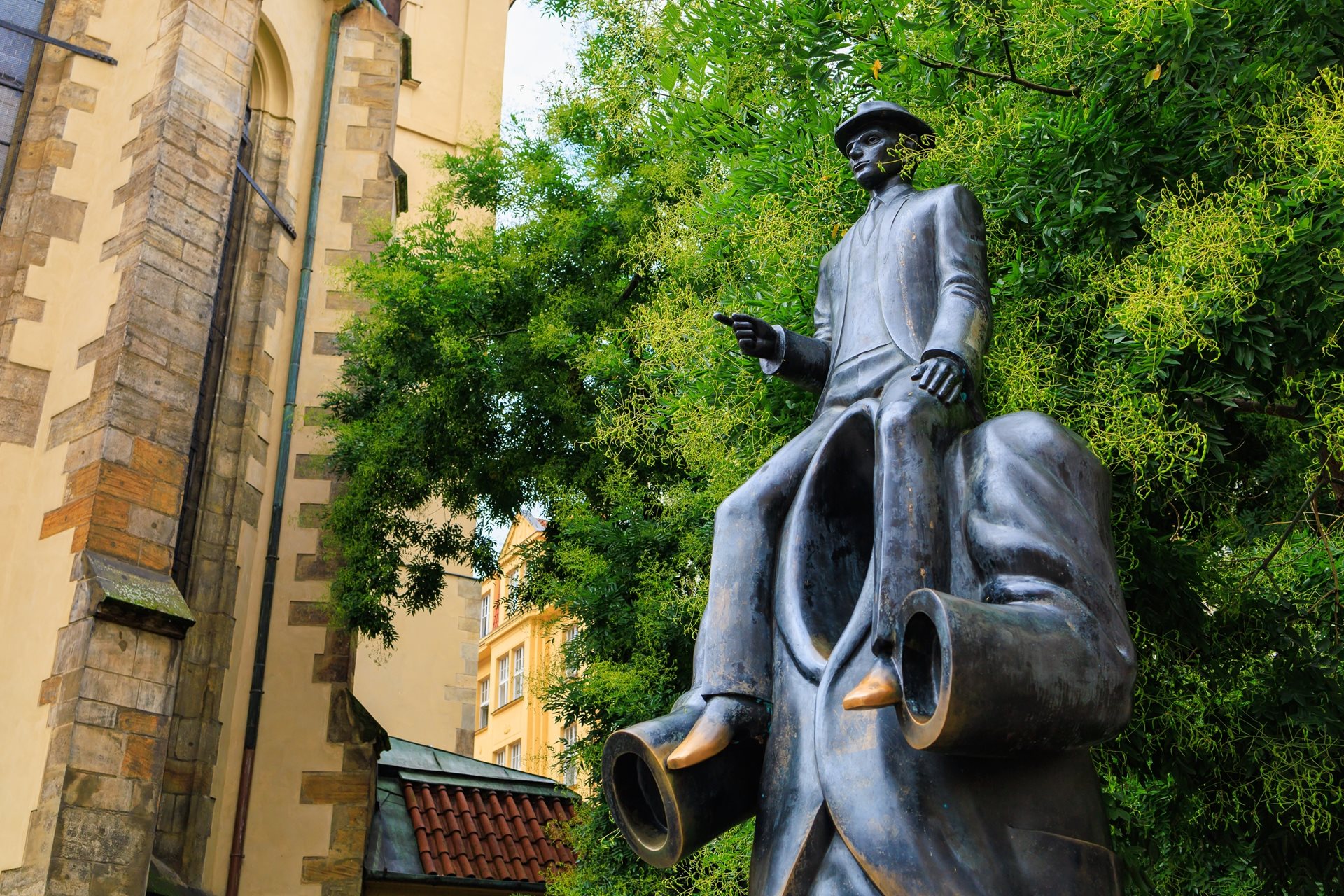Franz Kafka known and unknown
Franz Kafka's books are enjoyed by readers from New York to Tokyo. Kafka's portrait was rendered by the famous pop artist Andy Warhol, and Kafka's ideas inspired other great literary figures such as Albert Camus, Jean-Paul Sartre and J. D. Salinger. The popular Japanese writer Haruki Murakami paid tribute to this exceptional Czech author with his book Kafka on the Shore, and the father of the film Alien, the world-famous artist H. R. Giger, also paid homage to Kafka in his original work.
VIDEO: Jeremy Irons as Kafka in the Movie Kafka (dir. Steven Soderbergh, 1991)
For an interesting opportunity to find out more about Kafka's legacy, visit the exhibition at the DOX Centre for Contemporary Art in Prague. It is entitled KAFKAesque (runs until 22 September 2024).
His timeless work has made Franz Kafka famous all over the world. He was born into the German Jewish community on 3 July 1883 in Prague, the city he spent his whole life in and loved dearly. The city and its atmosphere inspired him, and you can still find traces of Franz Kafka in many of its places. During his lifetime he was mostly overlooked by the art world and did not make a living as a writer. He even begged one of his friends to burn all his manuscripts. Fortunately, he didn't listen, so we can still take a peek into his fantastic world and dark moods to this day. His literary legacy outlived him; he became far more famous after his death than during his lifetime.

Places imbued with the spirit of Franz Kafka
A walk around the places that Franz Kafka used to visit is an unforgettable experience, not only for admirers of his work. Kafka, who was a practising Jew, often used to visit the Old-New Synagogue, loved walking across Charles Bridge, and felt an inextricable affinity for the Clementinum, where he attended lectures and went to the library as a student. He and his parents lived right next to the Old Town Hall, from where it was a short walk to the grammar school, situated in what is now the Kinsky Palace, today home to the National Gallery.
From time to time, Kafka and his friends would also go for a coffee at the Café Savoy near Petřín or to the Café Louvre by the National Theatre. The atmosphere in these two historical cafés has been preserved over the ages and will whisk you back a hundred years into the past.

Monument to Franz Kafka by sculptor Jaroslav Róna, Dušní street in Jewish Quarter
Where to follow in Kafka’s footsteps today?
You could visit the Franz Kafka Museum in Prague, where you can see some of the personal effects of this literary genius. You’ll find it in the Herget Brickworks in Malá Strana, just a few steps from Charles Bridge. The museum includes a shop offering the full range of Kafka’s work and biographies. And don’t forget to visit the Quadrio shopping centre by the National Theatre, where you’ll find an imposing sculpture of Franz Kafka’s head by artist David Černý.

Kafka's Castle exists
Kafka began writing his last novel, The Castle, at the Koruna Hotel in the mountain resort of Špindlerův Mlýn. It was there that they got Kafka's name mixed up; the sign in the foyer read Josef K., the name Kafka uses in the novel. It is said that the precursor of the mysterious castle may have been the castle and château in Frýdlant or in the village of Siřem, where Franz Kafka arrived in September 1917, shortly after doctors confirmed his diagnosis of laryngeal tuberculosis.
Franz Kafka died on 3 June 1924 in a sanatorium in Kierling near Klosterneuburg in Lower Austria.
He lived for a mere 40 years.












